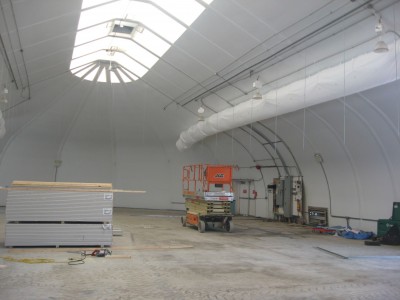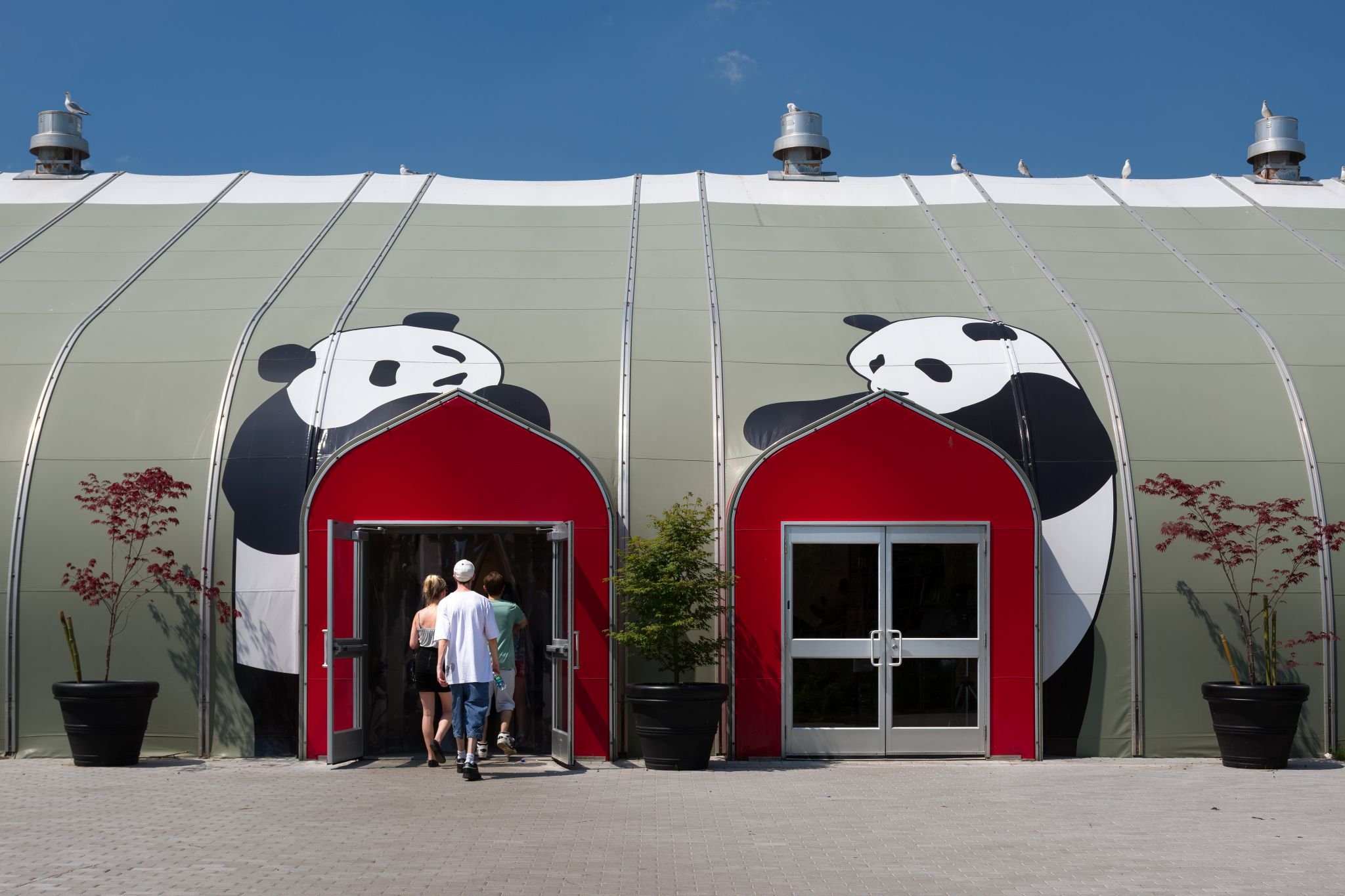By Peter Saunders
In May, the Toronto Zoo unveiled its newest guests, Er Shun and Da Mao, two giant pandas on loan from China. As part of a long-term conservation agreement, the breeding pair (female and male, respectively) will be hosted in Toronto for at least five years. They may then be relocated to the Calgary Zoo for an additional five years, but should they breed successfully while in Toronto, the pandas and their offspring will remain in place until the move can be approved, housed in their recently renovated enclosure (previously a tiger exhibit).
When Toronto Zoo visitors arrive for the Giant Panda Experience, before they can get up close to Er Shun and Da Mao at the enclosure, they will first pass through the Panda Gate and the climate-controlled Panda Interpretive Centre, a tented zone that uses static, digital and interactive signage to educate them about pandas, bamboo (the bears’ primary food), conservation efforts and related topics. With the zoo anticipating up to 10,000 people to visit the attraction every day, the interpretive centre offers a 10- to 30-minute learning experience to keep visitors engaged while in line.
Toronto-based Reich+Petch (R+P) led the design of the 743-m2 (8,000-sf) interpretive centre, which entailed a number of themed areas, China-inspired imagery, multimedia resources and modern esthetics. The exhibit design firm punctuated the clean white lines of the tent with red accents and incorporated black-and-white structures to represent the pandas’ colouring.
Images include life-sized animal photos, bamboo patterns and other environmental graphic design (EGD) elements. A large display showcases the amount of bamboo offered to each panda daily, for example, while an interactive game challenges players to find pandas in their natural Chinese habitats. A multimedia presentation showcases some of the people working behind-the-scenes at the zoo to care for the pandas. And a 3.7 x 2.1-m (12 x 7-ft) touch-sensitive video wall allows visitors to connect isolated panda habitats by planting bamboo trees. Finally, guests walk through a simulated bamboo forest and out of the centre to see Er Shun and Da Mao.
“Visitors are immersed in everything they need to know about these iconic, fascinating and endangered animals,” says Carolyn Smith, senior designer at R+P. “Our aspiration is the experience will inspire them to join in conservation efforts currently underway.”

An existing tent structure at the zoo was renovated to create the Panda Interpretive Centre. Photos courtesy Toronto Zoo
Planning and logistics
Planning the interpretive centre began at the zoo, with project manager Leona Mitchell responsible for overseeing all design and construction work.
“We were working with existing spaces,” she explains. “The enclosure will become home for the tigers again after the pandas leave. And the interpretive centre is where we previously had Stingray Bay, a short-term exhibit where visitors could touch and feed sea creatures.”
In repurposing these spaces, Mitchell had to balance design goals with logistics. When the zoo first featured giant pandas in 1985, with Qing Qinq and Quan Quan paying a mere 100-day visit, throngs of visitors suffered through three-hour lineups.
“We have information about those lineups, so we knew what to anticipate this time,” says Mitchell.
“You don’t want people to feel they’re in a line,” says R+P’s Smith, who served as project co-ordinator and lead designer. “Back in the 1980s, the zoo was completely unprepared for the huge numbers of visitors. So, there was a concerted effort this time to give people something to do.”






